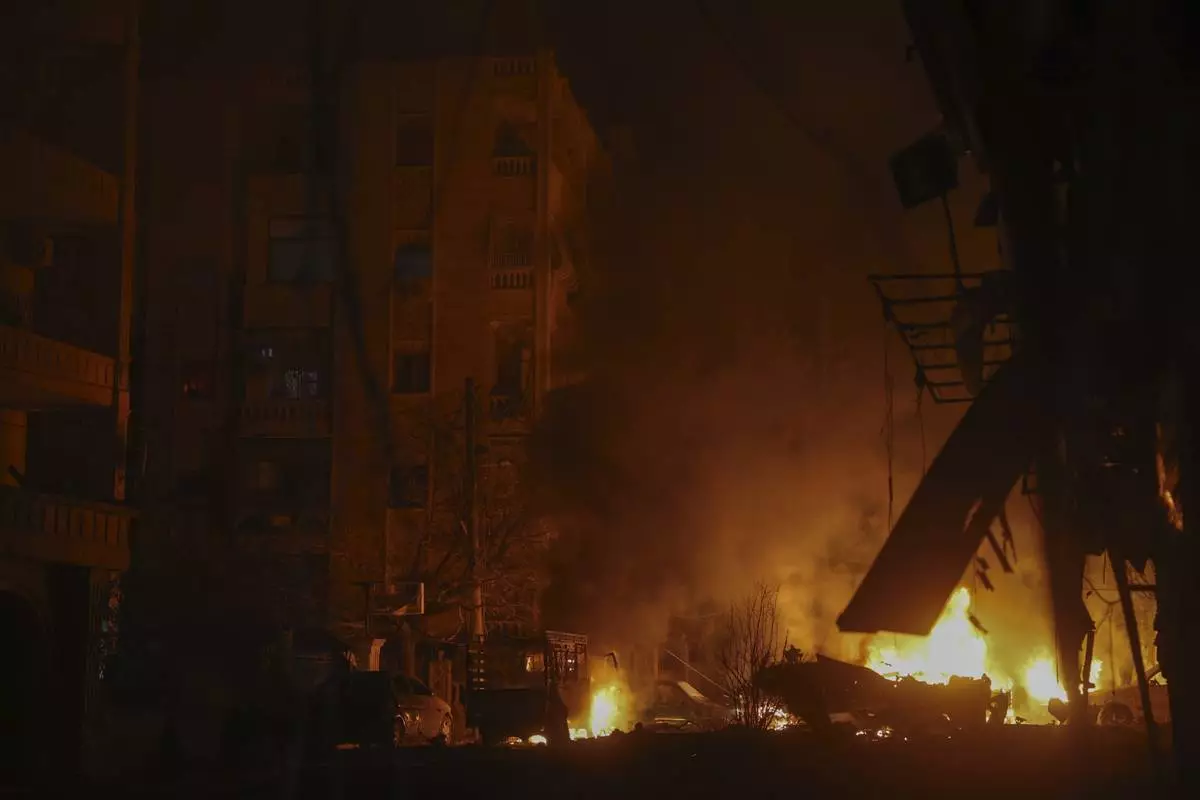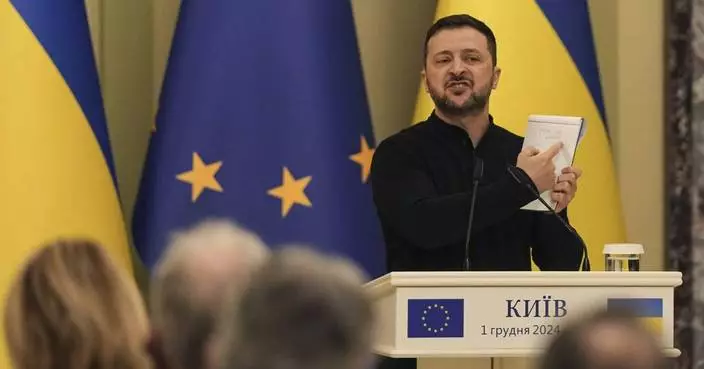SAN JOSE, Calif.--(BUSINESS WIRE)--Dec 2, 2024--
Spectro Cloud today announced that it is a launch partner for the new Amazon EKS Hybrid Nodes feature debuting at AWS re:Invent 2024.
This press release features multimedia. View the full release here: https://www.businesswire.com/news/home/20241202746704/en/
EKS Hybrid Nodes is a new feature in Amazon EKS, which enables EKS Kubernetes clusters to span from the AWS cloud to on-premises data centers and edge locations.
Spectro Cloud’s Palette Kubernetes management platform helps enterprises to easily provision and manage the complete lifecycle of their hybrid nodes and EKS clusters simply, securely and at scale.
Hybrid use cases are on the rise
Enterprises are looking for hybrid infrastructure to support today’s dynamic, distributed and resource-intensive application workloads. With EKS Hybrid Nodes, organizations have the benefit of operating the Kubernetes control plane in the cloud, with worker nodes stretching across one or more on-prem edge and data center locations. This enables them to:
AWS brings the control plane, Palette manages the rest
As part of today’s launch, Spectro Cloud Palette now fully supports hybrid nodes with EKS, enabling organizations to automate the bootstrapping and onboarding of bare metal servers and VMs as nodes into the hybrid cluster at scale, a task that would otherwise be highly manual.
Palette also provides full lifecycle management for EKS Hybrid Nodes, including challenging common tasks such as upgrades, from a single interface that spans all their Kubernetes resources.
“Hybrid architectures present opportunities across all kinds of use cases, but can also include so many layers of complexity,” said Saad Malik, co-founder and CTO of Spectro Cloud. “With EKS Hybrid Nodes and the power of our Palette platform, we can now truly offer customers an easy to manage, unified EKS environment from edge to cloud.”
Automated fleet management for EKS customers
This announcement builds on the existing relationship between AWS and Spectro Cloud, which earlier this year announced a record five AWS competencies and other recognitions as an AWS partner.
Spectro Cloud Palette is increasingly the choice of AWS customers, who use it to automate how they provision and manage the full lifecycle of Kubernetes clusters in EC2 and EKS, at scale. Customers see Palette as a way to onramp to EKS more quickly, and set themselves up for efficient day-to-day cluster fleet management.
“Hybrid cloud architectures have a huge appeal for many of the enterprise customers I talk with every day, from retail to pharmaceuticals,” said Jared Cheney, Vice President of Services, North America for SoftwareOne. “With Amazon EKS Hybrid Nodes and Spectro Palette, I can now offer those customers the best of both worlds: the convenience and scalability of cloud, with the control and performance of on-prem. This is a game-changer for Kubernetes.”
Discover EKS Hybrid Nodes and Palette
Organizations are invited to visit Spectro Cloud at AWS re:Invent to learn more about Palette and the EKS Hybrid Nodes feature integration.
Details of the integration are explored in this technical blog, and customers are invited to get in touch with Spectro Cloud for a demo, or speak to their AWS account representatives to learn more.
About Spectro Cloud
Spectro Cloud uniquely enables organizations to deploy and manage Kubernetes in production, at scale. Its Palette enterprise Kubernetes management platform gives Platform Engineering, IT Operations and DevOps teams effortless control of the full Kubernetes lifecycle. With support for both VM and container workloads, Palette is a truly unified management platform across clouds, data centers, bare metal and edge environments.
Spectro Cloud is a ‘leader’ and ‘outperformer’ in GigaOm’s 2024 Radars for Edge Kubernetes and Managed Kubernetes, and is an AWS Differentiated partner holding designations including ISV Accelerate, Well-Architected Review, Containers Competency, Public Sector Partner and Government Software Competency.
Co-founded in 2019 by CEO Tenry Fu, Vice President of Engineering Gautam Joshi and Chief Technology Officer Saad Malik, Spectro Cloud is backed by Alter Venture Partners, Boldstart Ventures, Firebolt Ventures, Growth Equity at Goldman Sachs Alternatives, NEC and Translink Orchestrating Future Fund, Qualcomm Ventures, Sierra Ventures, Stripes, T-Mobile Ventures, TSG and WestWave Capital.
For more information, visit https://www.spectrocloud.com or follow @spectrocloudinc and @spectrocloudgov on X.


(Graphic: Business Wire)
WASHINGTON (AP) — The 13-year civil war in Syria has roared back into prominence with a surprise rebel offensive during which they seized Aleppo, one of Syria's largest cities and an ancient business hub. The push is among the rebels' strongest in years in a war whose destabilizing effects have rippled far beyond the country's borders.
It was the first opposition attack on Aleppo since 2016, when a brutal air campaign by Russian warplanes helped Syrian President Bashar Assad retake the northwestern city. Intervention by Russia, Iran and Iranian-allied Hezbollah and other groups had allowed Assad to remain in power within the 70% of Syria under his control.
Insurgents led by jihadi group Hayat Tahrir al-Sham launched the two-pronged attack on Aleppo last week and moved into the countryside around Idlib and neighboring Hama province. The Syrian military has rushed reinforcements and launched airstrikes as they attempted to stall their momentum.
The surge in fighting has raised the prospect of another violent front reopening in the Middle East, at a time when U.S.-backed Israel is fighting Hamas in Gaza and Hezbollah in Lebanon, both Iranian-allied groups.
Robert Ford, the last-serving U.S. ambassador to Syria, pointed to months of Israeli strikes on Syrian and Hezbollah targets in the area, and to Israel’s ceasefire with Hezbollah in Lebanon last week, as factors providing Syria’s rebels with the opportunity to advance. Russia, Assad's main international backer, is also preoccupied with its war in Ukraine.
Here's a look at some of the key aspects of the new fighting:
Assad has been at war with opposition forces seeking his overthrow for 13 years, a conflict that's killed an estimated half-million people. The conflict started as one of the Arab Spring popular uprisings in 2011 against Arab dictators, before Assad's brutal response to what had been largely peaceful protests turned the conflict violent. Some 6.8 million Syrians have fled the country since then, a refugee flow that helped change the political map in Europe by fueling anti-immigrant far-right movements.
The roughly 30% of the country not under Assad is controlled by a range of opposition forces and foreign troops. The U.S. has about 900 troops in northeast Syria, far from Aleppo, to guard against a resurgence by the Islamic State. Both the U.S. and Israel conduct occasional strikes in Syria against government forces and Iran-allied militias. Turkey has forces in Syria as well, and has influence with the broad alliance of opposition forces storming Aleppo.
Coming after years with few sizeable changes in territory between Syria's warring parties, the fighting “has the potential to be really quite, quite consequential and potentially game-changing,” if Syrian government forces prove unable to hold their ground, said Charles Lister, a longtime Syria analyst with the U.S.-based Middle East Institute.
Risks include if militants with the Islamic State extremist group see the renewed fighting as an opening, Lister said. The Islamic State, a violently anti-Western and repressive organization, in 2014 notoriously declared a self-styled caliphate that seized parts of Syria and Iraq. The Islamic State's Syria and Iraq branch no longer controls any territory, and is not known to be playing a role in the current fighting. But is still a lethal force operating through sleeper cells in the two countries.
Ford said the fighting in Aleppo would become more broadly destabilizing if it drew Russia and Turkey — each with its own interests to protect in Syria — into direct heavy fighting against each other.
The U.S. and U.N. have long designated the opposition force leading the attack at Aleppo — Hayat Tahrir al-Sham, known by its initials HTS — as a terrorist organization.
Abu Mohammed al-Golani emerged as the leader of al-Qaida's Syria branch in 2011, in the first months of Syria's war. It was an unwelcome intervention to many in Syria's opposition, who hoped to keep the fight against Assad's brutal rule untainted by violent extremism.
Golani and his group early on claimed responsibility for deadly bombings, pledged to attack Western forces, confiscated property from religious minorities and sent religious police to enforce modest dress by women.
Golani and HTS have sought to remake themselves in recent years, focusing on promoting civilian government in their territory as well as military action, researcher Aaron Zelin noted. His group broke ties with al-Qaida in 2016. Golani cracked down on some extremist groups in his territory, and increasingly portrays himself as a protector of other religions. That includes last year allowing the first Christian Mass in the city of Idlib in years.
By 2018, the Trump administration acknowledged it was no longer directly targeting Golani, Zelin said. But HTS has allowed some wanted armed groups to continue to operate on its territory, and shot at U.S. special forces at least as recently as 2022, he said.
At the crossroads of trade routes and empires for thousands of years, Aleppo is one of the centers of commerce and culture in the Middle East.
Aleppo was home to 2.3 million people before the war. Rebels seized the east side of the city in 2012, and it became the proudest symbol of the advance of armed opposition factions.
In 2016, government forces backed by Russian airstrikes laid siege to the city. Russian shells, missiles and crude barrel bombs — fuel canisters or other containers loaded with explosives and metal — methodically leveled neighborhoods. Starving and under siege, rebels surrendered Aleppo that year.
The Russian military's entry was the turning point in the war, allowing Assad to stay on in the territory he held.
This year, Israeli airstrikes in Aleppo have hit Hezbollah weapons depots and Syrian forces, among other targets, according to an independent monitoring group. Israel rarely acknowledges strikes at Aleppo and other government-held areas of Syria.

A defaced portrait of Syrian President Bashar Assad lies on the ground in the town of Maarat al-Numan, southwest from Aleppo, Syria, Saturday Nov. 30, 2024. Thousands of Syrian insurgents have fanned out inside Syria's largest city Aleppo and large areas around previously controlled by the government with little resistance from troops.(AP Photo/Omar Albam)

Syrian opposition fighters drive by an abandoned Syrian army armoured vehicle on a highway in the outskirts of in Khan Sheikhoun, southwest of Aleppo, Sunday, Dec. 1, 2024. Syrian opposition insurgency launched a campaign on Wednesday with a two-pronged attack on Aleppo and the countryside around Idlib.(AP Photo/Ghaith Alsayed)

Syrian opposition fighters drive a seized seized Syrian army armoured vehicle near the town of Khan Assubul, Syria, southwest of Aleppo, Sunday, Dec. 1, 2024. Syrian opposition insurgency launched a campaign on Wednesday with a two-pronged attack on Aleppo and the countryside around Idlib.(AP Photo/Ghaith Alsayed)

The bodies of Syrian army soldiers and allied fighters lie next to a Syrian army vehicle after being allegedly killed in combat by opposition fighters in Aleppo, Syria, early Saturday Nov. 30, 2024. Thousands of Syrian insurgents have fanned out inside Syria's largest city Aleppo a day after storming it with little resistance from government troops.(AP Photo/Omar Albam)

Vehicles burn after an airstrike against opposition fighters in Aleppo, Syria, late Friday, Nov. 29, 2024. (AP Photo/Ghaith Alsayed)

Syrian opposition fighters ride in a truck in Talhiya, Idlib countryside, Syria, Friday, Nov. 29, 2024. (AP Photo/Ghaith Alsayed)

Opposition forces take control of areas outside Aleppo, Syria, Friday, Nov. 29, 2024. (AP Photo/Ghaith Alsayed)

Opposition forces take control of areas outside Aleppo, Syria, Friday, Nov. 29, 2024. (AP Photo/Ghaith Alsayed)



















